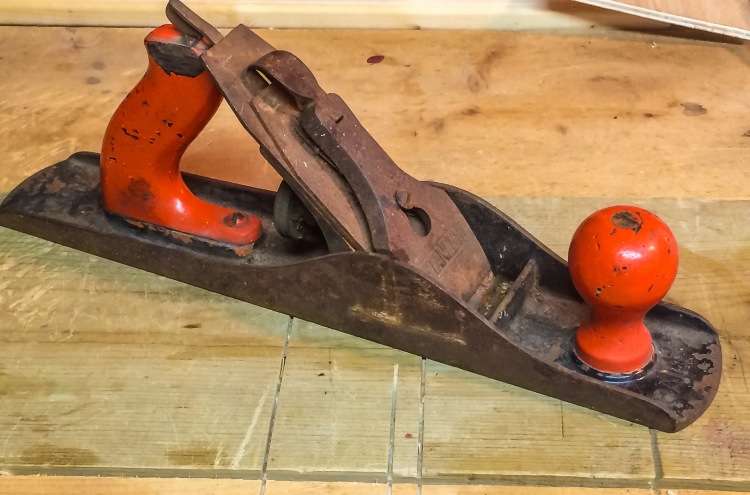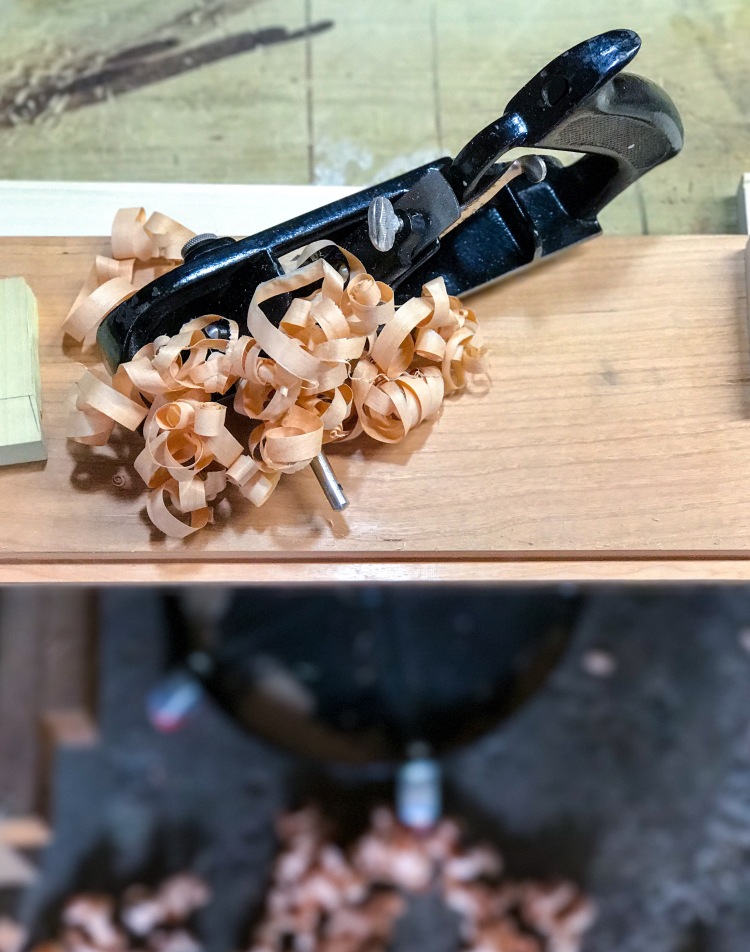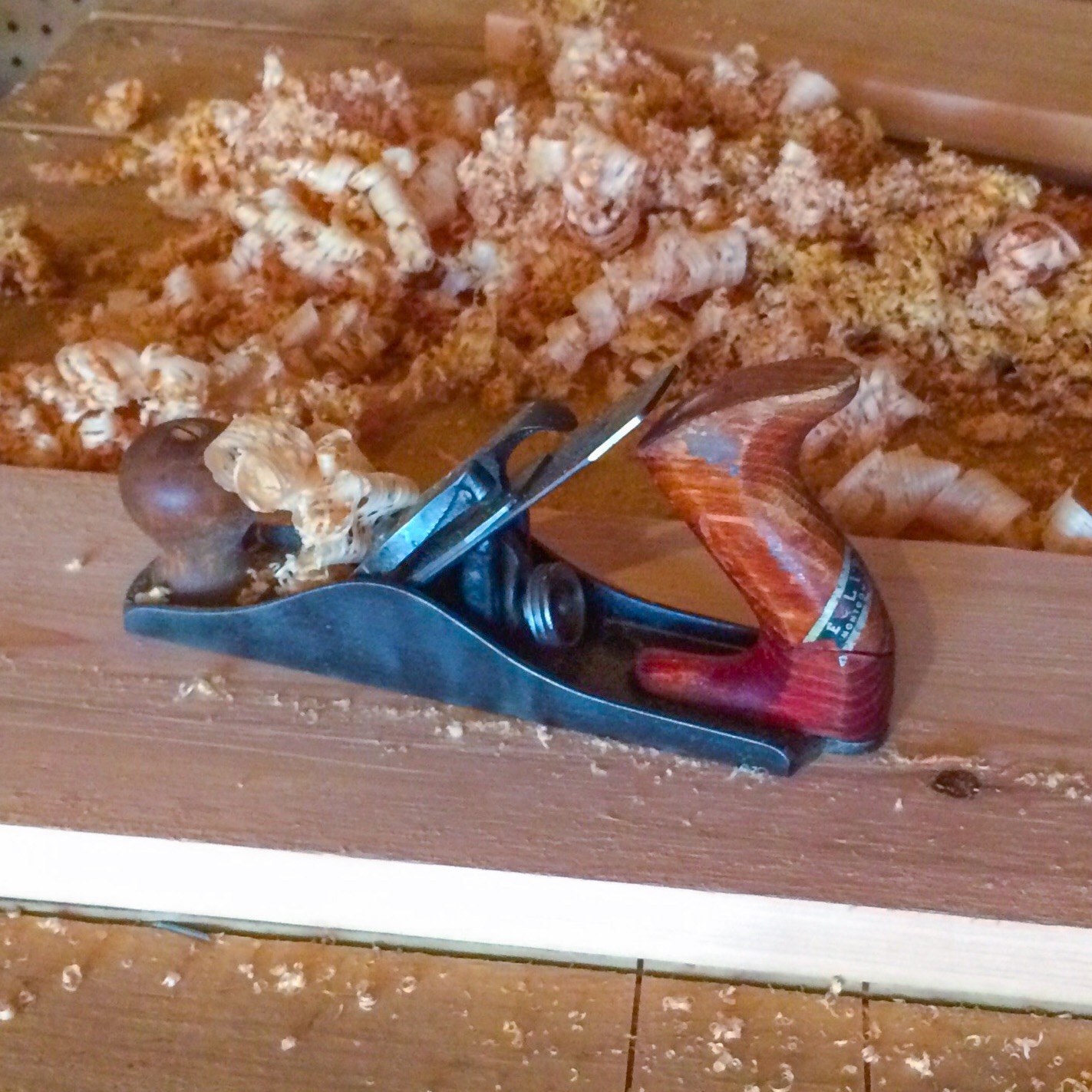I am slowly realizing that “getting into woodworking” actually means that you “get into,” or more properly stated, “fall into” different woodworking niches and rabbit holes. I am also finding that one rabbit hole begets other holes. As someone interested in hand tool woodworking, I was presented early on with one particularly deep burrow: hand tool restoration. Several prominent internet hand tool orientated woodworkers advocate shaping up an old hand plane as a inexpensive and good way for beginners to get into the craft. Chris Schwarz uses a mix of new and old hand tools including a vintage jack plane, and I’m pretty sure Paul Sellers can build a timber frame Taj Mahal using only an old tuned up #4 and a hunk of wood with a chisel shoved through it.
Hunks of wood aside, using vintage tools makes a lot of sense for the budget conscious beginning woodworker. There are some great hand tool manufactures out there, but the stuff can be downright expensive and out of the range for a lot of people. Vintage tools made back in the day are often of good quality but there is a catch (there is always a catch). Old tools that have been expertly restored can be expensive as well. So, the true bargains are for tools that are not ready for use. Starting with vintage tools that are dull, dinged, and rusty can mean, with an additional time investment, a great tool can be had on the cheap.
My dad had an old hand plane (a Montgomery Ward branded #3) and hand brace (Stanley) chilling out in his barn. We worked on getting the plane up and running (rust removal and sharpening) and it was the tool that got me hooked on hand tools (it’s the featured image of this post). I restored the hand brace myself, which was really just in need of some light rust removal, oiling, and refinishing the wood handles. Both tools were on the cheaper side of things when sold new, but they worked great after some elbow grease. I was ready to move on to bigger challenges.

My dad picked up an old Stanley #5 jack plane from the local flea market. He got it for himself but gave it to me after I drooled all over it. Using Patrick Leach’s awesome site on Stanley hand planes, I was able to ID it as a type 14 made between 1929 and 1930. It was rusty as hell, the sweetheart blade was crooked and dull as a butter knife, and the rosewood handles were painted orange with the back tote missing a large chunk. I pretty much followed Paul Seller’s video on restoring a hand plane. I did all the work myself except for the replacement rear tote I purchased. It was messy but I was able to take an unusable hunk of rust to a usable, and kinda beautiful in its own way, tool.

Besides finding the process very satisfying, you learn a ton from restoring tools. I know how they work so much better than I would have if I had just bough them and started working. I am a better sharpener because of having to take a blade from super dull to super sharp. You also get a chance to customize them a little more. For example, I have a new #6 Veritas. I really like how it cuts, but I like the feel of the planes I restored better because I used an oil and wax finish on the handles. It a small thing, but it matters when using a tool for a long time. Also, I actually like the vintage steel blades a little better because they are quicker to sharpen.
Since that jack plane I have restored a #4 (type 13) for myself and a #5 (type 19) for my dad. I have also done a Craftsman rabbet plane, a Stanley sweetheart no.80 cabinet scraper, and a wood side-beading plane. My backlog includes a couple of block planes, draw knives, and one more side-beading plane. I am also mildly obsessed with the thoughts of restoring old axes and saws. The trouble is finding the time to go to flea markets or lurk on EBay for deals, let alone the time to work on tools while also wanting to do actual woodworking.

And that’s just one rabbit hole, have you even looked into wood turning?!?
